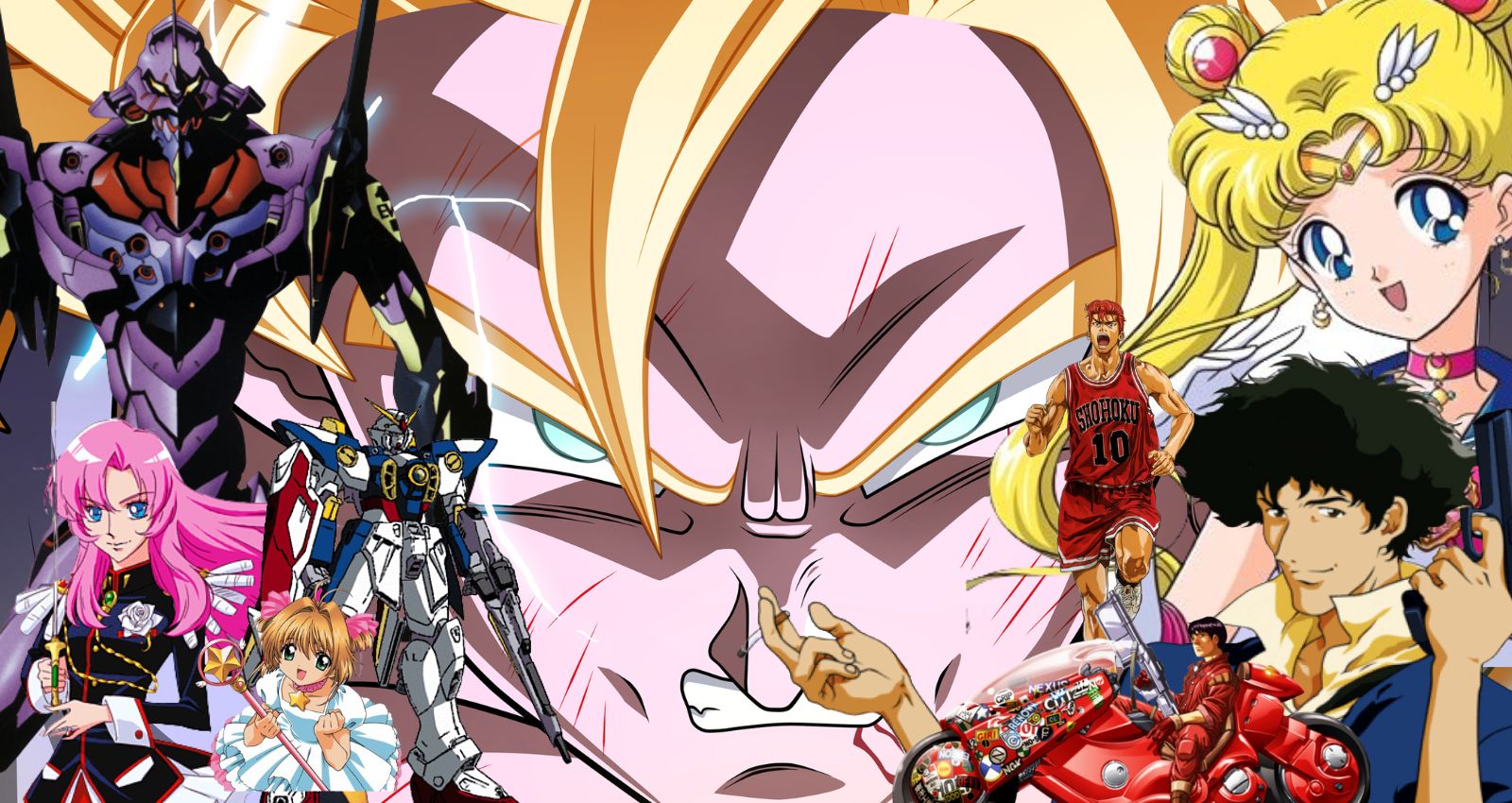Long before anime conquered the global stage — breaking box office records, inspiring blockbuster franchises, and shaping entire generations — there existed a golden age that defined the soul of the medium.
It was an era where hand-drawn frames carried heartbeats, where every brushstroke told a story, and where legends were born through grit, vision, and imagination. These old-school masterpieces weren’t just shows; they were experiences that redefined storytelling — breathing life into unforgettable characters, crafting worlds beyond dreams, and weaving narratives that stood the test of time.
Each series from that era left an indelible mark — not just on fans, but on the very DNA of anime itself. Their legacy runs through every modern hit today, echoing in every frame that moves us, every hero that inspires us, and every world that dares to dream bigger.
The golden age of anime wasn’t just a period — it was a promise. A promise that art, when driven by heart, can transcend time. Decades later, these classics still remind us why we fell in love with anime in the first place — not for the spectacle, but for the stories that never stop resonating.
Slam Dunk
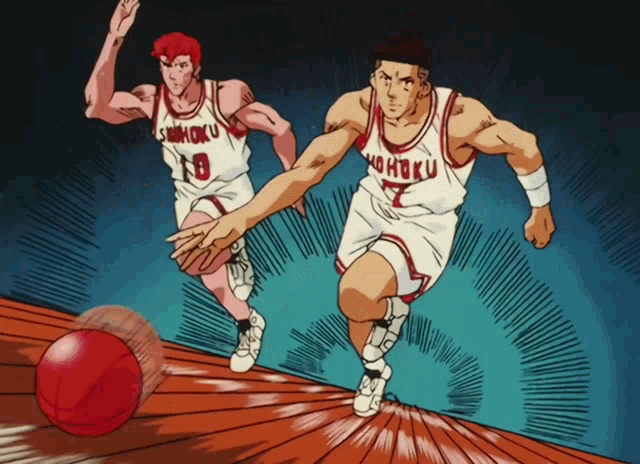
This anime isn’t just a sports anime — it’s a coming-of-age story written in sweat, grit, and raw emotion.
At its heart is Hanamichi Sakuragi, the fiery redhead whose short temper and delinquent streak mask an untapped potential. His world turns upside down when he meets Haruko Akagi, the bright, basketball-loving classmate who sees something more in him. What begins as a shallow attempt to impress her soon transforms into a deep, burning passion for the game itself.
On the court, Sakuragi finds more than just competition — he finds purpose. Every dribble, every rivalry, every loss becomes a mirror reflecting his growth. Beside him stand teammates and rivals like Kaede Rukawa, whose calm intensity perfectly contrasts Sakuragi’s chaos, pushing him to evolve not just as a player, but as a person.
Slam Dunk redefined the sports anime genre by grounding its story in emotion and realism. It captured the electric pulse of youth — the hunger to be better, the sting of failure, and the glory of unity. Even decades after its 1996 conclusion, its heartbeat hasn’t faded.
The release of The First Slam Dunk in 2022 reignited that passion, proving that this story’s impact transcends generations. For countless fans, Slam Dunk wasn’t just an anime about basketball — it was a lesson in perseverance, friendship, and the timeless beauty of chasing something with your whole heart.
It’s not just a story about playing the game — it’s about becoming the game.
Cardcaptor Sakura

Cardcaptor Sakura is the kind of story that feels like a dream you never want to wake up from — soft, luminous, and brimming with magic that lingers long after the final episode fades.
At its heart is Sakura Kinomoto, a curious and kind-hearted girl whose ordinary life takes a breathtaking turn when she accidentally releases the Clow Cards — mystical entities, each carrying its own power and personality. What begins as a mistake blossoms into destiny, as Sakura takes on the mantle of a Cardcaptor, guided by the endearing guardian Cerberus and supported by her creative, ever-loyal best friend Tomoyo Daidouji.
But what truly makes Cardcaptor Sakura timeless isn’t just its spellbinding magic or vibrant animation — it’s its heart. Every captured card, every test of courage, and every gentle act of kindness becomes part of Sakura’s emotional journey toward growth, love, and self-discovery.
CLAMP’s storytelling weaves together whimsy and warmth, crafting a world where magic exists alongside real, complex feelings. It broke boundaries with its tender and authentic representation of LGBTQ+ relationships, years ahead of its time, proving that love — in all its forms — is the truest kind of magic.
More than a magical girl story, Cardcaptor Sakura is a celebration of youth, empathy, and wonder. It reminds us that courage doesn’t always roar — sometimes, it shines softly through a smile, a friendship, or a heart that dares to believe in the impossible.
Trigun
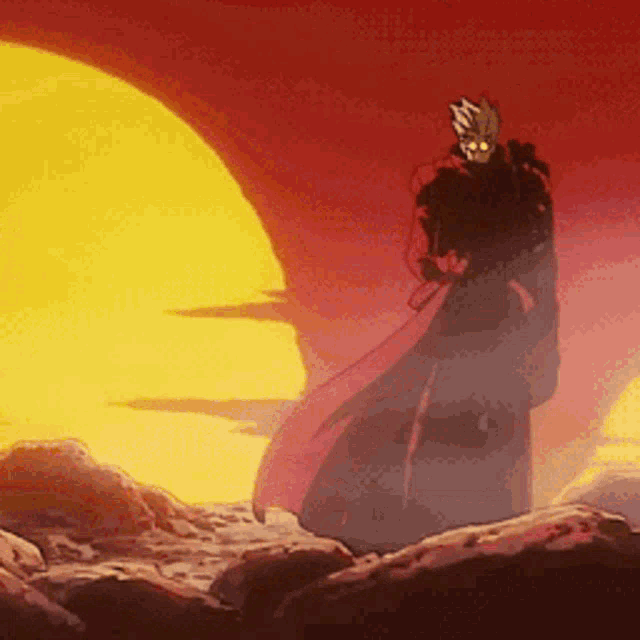
Trigun is a bullet-riddled elegy — a desert hymn about guilt, mercy, and the impossible quest to do good in a broken world.
At the center of its dusty chaos stands Vash the Stampede, the “Humanoid Typhoon.” His name alone sends shivers down spines, his face plastered on wanted posters with a bounty so high it could buy entire planets. Yet behind the legends and explosions lies something far rarer — a man who refuses to kill.
Vash isn’t a gunslinger born of malice. He’s a wanderer weighed down by compassion in a world that rewards cruelty. Accompanied by Meryl Stryfe and Milly Thompson, two insurance agents tasked with minimizing the damage he leaves behind, Vash drifts through a sun-scorched wasteland — chasing peace while haunted by the ghosts of his past.
Every encounter tests his ideals. Every fight becomes a sermon on morality, forcing him to walk the razor’s edge between survival and sanctity. Beneath the gunfire and humor lies a powerful meditation on redemption, forgiveness, and the unbearable cost of kindness in a world that’s forgotten what it means to care.
Trigun is more than a sci-fi western — it’s a soul laid bare under the blazing suns. A story that whispers, even through the sound of gunfire: No life is worthless. No heart beyond saving.
Mobile Suit Gundam Wing

Mobile Suit Gundam Wing is not just a mecha epic — it’s a poetic clash between ideals, rebellion, and the fragile dream of peace suspended between the stars.
Set in an era where humanity’s reach extends beyond Earth, the story follows five young pilots sent from the space colonies to infiltrate and destabilize the oppressive United Earth Sphere Alliance. Each carries their own burden — vengeance, justice, hope, or doubt — and commands a towering weapon of war: the Gundam.
But beneath the gleaming steel and thunderous battles, Gundam Wing is a meditation on what it means to fight for peace. These pilots — brave yet broken, fierce yet human — find themselves questioning the very purpose of their missions. Their Gundams may be symbols of strength, but the real battle is waged within — between duty and conscience, freedom and destruction.
Blending political intrigue, existential conflict, and high-octane mecha warfare, Mobile Suit Gundam Wing carved its place as a cornerstone of anime history. It didn’t just redefine the mecha genre; it bridged cultures, captivating audiences across the world and introducing a new generation to the power of anime storytelling.
In its silence between explosions, it asks a timeless question — What is peace worth, and who must bear its weight?
Gundam Wing answers not with certainty, but with courage — the courage to fight, to question, and to dream of a world where machines no longer define humanity’s strength… but its compassion.
Revolutionary Girl Utena
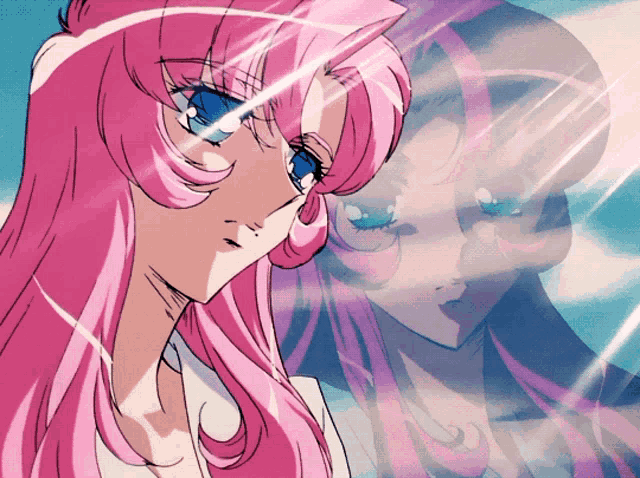
At its core is Utena Tenjou, a girl who refuses to be defined by what the world tells her she should be. Inspired by the memory of a prince who once showed her kindness, she vows not to become a princess waiting to be saved — but a prince herself. When she enters the mysterious Ohtori Academy, her ideals are tested through ritualized sword duels fought for the enigmatic Rose Bride, Anthy Himemiya — a quiet girl bound by powers and secrets that transcend understanding.
But what begins as a fairy tale quickly spirals into something deeper — a psychological and symbolic deconstruction of identity, gender, and desire. Every duel, every rose, every shadow play peels back layers of illusion, revealing the raw, painful truths of what it means to grow up, to love, and to define yourself in a world obsessed with roles and appearances.
Revolutionary Girl Utena broke boundaries by dismantling the conventions of the magical girl and shōjo genres. It dared to blend surrealism with social commentary, exploring sexuality, gender fluidity, and self-liberation long before such themes were openly embraced in mainstream media.
With its poetic visuals, haunting score, and labyrinthine symbolism, Utena became a revolution in itself — an exploration of how love can liberate or imprison, and how true nobility lies not in saving others, but in learning to save yourself.
Even decades later, Revolutionary Girl Utena remains an icon — not just a story, but a mirror reflecting the eternal struggle between who we are told to be… and who we dare to become.
Cowboy Bebop
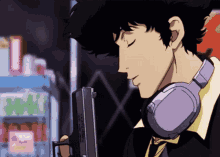
Set aboard the worn-out ship Bebop, the story follows a mismatched crew of bounty hunters drifting between planets and memories. At the center is Spike Spiegel, a former gangster with a devil-may-care grin and ghosts he can’t outrun. Alongside him are Jet Black, the world-weary ex-cop searching for a sense of justice; Faye Valentine, the enigmatic con artist trapped between charm and vulnerability; Edward, the chaotic genius hacker; and Ein, the hyper-intelligent data dog who sees more than anyone realizes.
Together, they chase criminals, bounties, and the fleeting illusion of purpose — each one hiding behind swagger, sarcasm, or laughter, while quietly drowning in the gravity of their own pasts. Beneath its cool, effortless style, Cowboy Bebop is a story about loneliness, regret, and the human desire to keep moving even when there’s nowhere left to go.
Blending sci-fi, western grit, and noir melancholy, it creates a world that feels simultaneously distant and painfully real. The show’s pulse — its jazz-infused soundtrack — doesn’t just accompany the story; it is the story. Every trumpet wail, every bassline, every silence carries emotion where words fall short.
With its breathtaking animation, deep characters, and poetic storytelling, Cowboy Bebop didn’t just redefine anime — it transcended it. It became a meditation on what it means to live, to lose, and to keep searching for something beyond the stars.
Sailor Moon

At its center stands Usagi Tsukino, a clumsy, kind-hearted teenager whose world turns celestial when she discovers she’s the reincarnation of Princess Serenity, the guardian of the Moon Kingdom. Guided by destiny and the mysterious Luna, Usagi awakens as Sailor Moon, protector of Earth and beacon of hope against the darkness that threatens it.
But her journey isn’t just about fighting monsters — it’s about becoming. Through heartbreaks, laughter, and battles fought under starlit skies, Usagi evolves from an insecure girl unsure of her place in the world into a leader defined by compassion, loyalty, and unshakable love. Alongside her Sailor Guardians, she learns that true strength shines brightest when it’s shared — through friendship, faith, and self-discovery.
Blending magic, humor, and heartfelt emotion, Sailor Moon reimagined what it meant to be a hero. Its shimmering transformation sequences, complex characters, and empowering messages revolutionized the magical girl genre, inspiring generations to find beauty in bravery and tenderness in power.
Beyond its moonlit battles and cosmic elegance, Sailor Moon became a cultural phenomenon — a timeless tale that bridged East and West, teaching audiences everywhere that love, in all its forms, is the universe’s greatest magic.
Dragon Ball Z

The story follows Son Goku, a Saiyan raised on Earth, whose boundless spirit and unshakable heart drive him to protect the planet — and everyone he loves — from enemies that grow more fearsome with every battle. From galactic tyrants like Frieza to bioengineered monsters like Cell and ancient sorcerers like Majin Buu, every confrontation becomes more than a fight — it’s a test of will, a lesson in growth, and a celebration of the human (and Saiyan) spirit.
But beneath the explosive clashes and earth-shattering transformations lies the heart of Dragon Ball Z: the power of friendship, family, and perseverance. Goku’s strength doesn’t just come from training — it comes from kindness, from laughter shared with Krillin, Vegeta’s pride-fueled rivalry, Gohan’s quiet determination, and the love that ties them all together.
Every transformation — every Super Saiyan roar that split the heavens — became a symbol of what the series stands for: breaking boundaries, defying fate, and refusing to give up, no matter how impossible the odds.
With its perfect fusion of humor, heart, and high-stakes action, Dragon Ball Z transcended its genre to become a cultural cornerstone — a legend that shaped anime storytelling for generations.
It taught us that true strength isn’t about power alone — it’s about courage, compassion, and the will to stand tall when the universe itself is against you.
Because when Goku clenches his fists, smiles, and says, “Let’s go one more round,” — we’re reminded that heroes aren’t born.
They’re forged — one fight, one heartbeat, one Kamehameha at a time.
Akira

Set against the neon-lit decay of Neo-Tokyo, the story follows Shotaro Kaneda, the fearless leader of a biker gang, and his childhood friend Tetsuo Shima, whose life spirals out of control after a fateful encounter awakens terrifying telekinetic powers. What begins as brotherhood fractured by jealousy soon unravels into a nightmare — a clash between humanity’s thirst for power and its inevitable self-destruction.
Through its haunting imagery and raw energy, Akira captures the pulse of a city — and a generation — teetering on the edge. Every explosion, every scream, every streak of red light on the highway becomes a symbol of rebellion and loss. As the line between man and god blurs, Akira forces us to confront the question: what happens when evolution is accelerated by rage instead of wisdom?
With its groundbreaking hand-drawn animation, densely layered world-building, and relentless atmosphere, Akira didn’t just pioneer the cyberpunk genre — it became its beating heart. Its influence rippled across cinema, music, and art, shaping the DNA of everything from The Matrix to Ghost in the Shell and beyond.
Decades later, Akira still feels like prophecy — a vision of a world consumed by its own ambition and yearning for transcendence. It’s not just an anime classic; it’s a cultural detonation — the moment anime stopped being niche and became myth.
Neon Genesis Evangelion
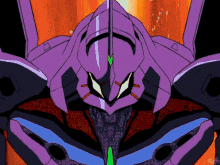
The story centers on Shinji Ikari, a withdrawn and uncertain teenager thrust into the cockpit of a towering bio-mechanical weapon — the Evangelion Unit-01. Tasked with defending humanity against the godlike invaders known as Angels, Shinji isn’t just fighting for survival — he’s fighting himself. Each battle tears deeper into his psyche, peeling away layers of loneliness, guilt, and the desperate need for connection.
But Evangelion is not about victory — it’s about vulnerability. It strips away the conventions of the mecha genre, revealing the raw humanity underneath the armor. Every character — from Rei Ayanami’s quiet melancholy to Asuka Langley’s fiery fragility — carries the scars of existence, each one battling the same invisible enemy: isolation.
Through its symphony of apocalyptic imagery, religious symbolism, and psychological intensity, Neon Genesis Evangelion redefined storytelling in anime. It became a philosophical odyssey, exploring identity, depression, and the existential weight of being alive in a world that demands purpose.
With each scream, each still frame, and each quiet breakdown, the series dares to ask — what does it mean to be human when the world itself feels hollow?
Even decades later, Evangelion remains a timeless enigma — a masterpiece that doesn’t just tell a story, but dissects the human condition. It’s a descent into despair and a rebirth through self-understanding — proof that sometimes, the greatest battles are not fought in the skies… but within ourselves.
The Golden Age of Anime wasn’t just a time — it was the spark that ignited a worldwide phenomenon. From Dragon Ball Z’s explosive battles to Sailor Moon’s cosmic radiance, from Cowboy Bebop’s smoky jazz soul to Revolutionary Girl Utena’s introspective brilliance — these series didn’t just entertain, they transformed anime into a universal language of emotion, art, and storytelling.
Each of these masterpieces still echoes through modern anime, reminding us why this era remains eternal. It’s where heart met art — and created legends.
Hey anime fans! If your love for these classics runs deep, explore our universe of official Anime, Marvel, DC, Transformers, LEGO, and more collectibles — all crafted for true fans who live and breathe pop culture.
Relive the nostalgia. Celebrate the icons. Power up your collection today!

